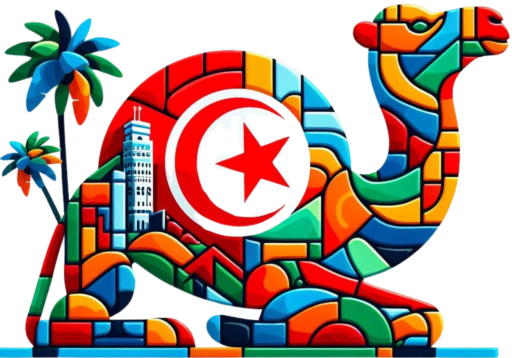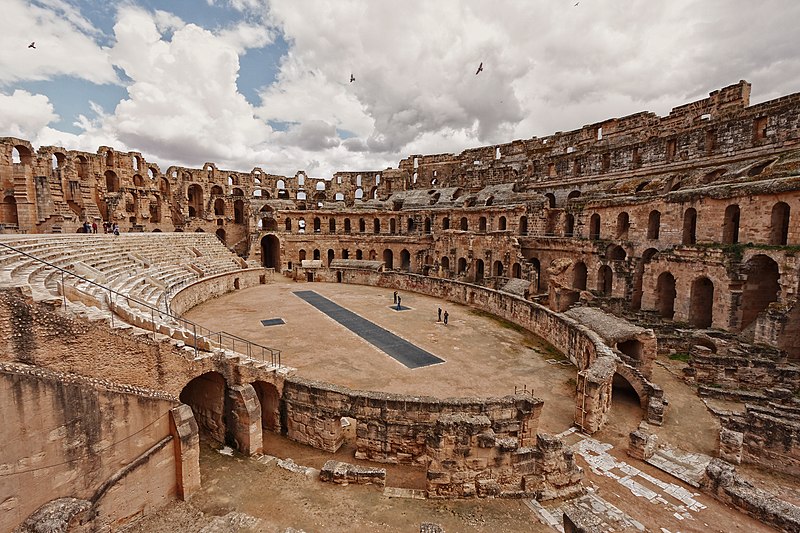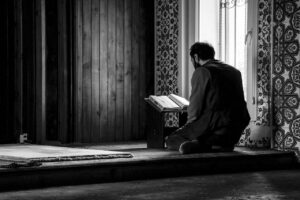For those in Tunisia also wishing to visit archaeological sites, in the governorate of Mahdia we find El Jem, a town 200 km from Tunis where the train to Tozeur once stopped, famous because it is home to some of the best Roman ruins in all of Africa. Right here, during Caesar’s African campaign in the second century A.D., the Romans planted on Punic ruins Thysdrus, a crossroads town to central Tunisia, rich in water, Roman cisterns, dams, wells (now all resources in decline due to neglect), famous for olive oil production especially under Hadrian (117-138 A.D.), but today it is a crop that has all but disappeared. It was also a wealthy city thanks to the numerous trade and the use of papyrus, which precisely in this dry city found its ideal storage place.
Although Thysdrus, second only to Carthage, was razed to the ground after the revolt of the landowners in 238 (which broke out because of the reintroduction of a tax on olive oil), it is a city that still has numerous Roman sites that can be visited, including some 30 Roman villas and a museum, but towering above them all is what was once on the outskirts of the city, while today it occupies its heart.
The Roman Amphitheater
Dating back to the third century and a testament to the Roman Empire along with the Baths of Carthage and the National Museum of Bardo, this amphitheater is often mistakenly called the coliseum and at its peak was estimated to have had a capacity of about 35,000 seated spectators. To give you a yardstick for comparison: the Colosseum in Rome, to which this amphitheater is twinned, has over 50000 seats.
Initially carved out of tuff, in the 2nd century the walls are raised up to 36 meters, supported by Corinthian columns. It is an elliptical amphitheater whose axes are 148 and 122 meters respectively, with a central sand arena measuring 65 by 39 meters. Below the arena floor we find two cross galleries and a series of cells and rooms to house fighters and fairs, while the podium on the arena was elevated.
The amphitheater at El Jem is only an 8-minute walk from the train station, making it visitable without necessarily having to stay overnight on site, but for those who decide to go we strongly recommend a visit also to the city’s archaeological museum, which can be visited with the same ticket paid for the amphitheater, where you can see an indoor area and the museum’s archaeological park.
Used for gladiator and chariot races (the chariots from the film Ben-Hur), the amphitheater remained intact until the 17th century, when some of its stones were reused in the construction of the city of El Jem and the Great Mosque of Qayrawan. During a conflict with the Ottomans, the structure, which was made a fortress in Byzantine times, was shelled to flush out rebels who had found refuge inside. Despite all that, Tunisia’s largest Roman capitals can still be admired here today: 1.86 meters high.
Declared a UNESCO World Heritage Site in 1979, the amphitheater was also exploited for a commercial for Nike in 1996: “Good vs. Evil,” where well-known soccer players hired by the multinational confronted a devil and his team to prevent them from wiping out the game of soccer. In more recent times, it was also exploited for some scenes in the movie “Gladiator.”
The Museum of El Jem
Visitable, as we said, with the same ticket as the Amphitheater, the Museum of El Jem has the largest collection of mosaics after that of the Bardo Museum and was carved out of an ancient Roman villa that is still almost intact, characterized by a central courtyard surrounded by a peristyle that overlooks the rooms that house sculptures, ceramics and above all splendid mosaics both two- and three-colored, which at first glance are very reminiscent of those found in the Roman villa in Piazza Armerina, Sicily. In addition to this, the museum houses an extraordinary display of architectural elements that belonged to the city’s villas and public buildings, and from here it is possible to enter the Archaeological Park, to visit what remains of the Villa of the Peacock; the Villa of Bacchus; the Villa of Tertulla; the Villa of the Dionysian Procession (a recently discovered peristyle domus dating from the Antonine age: 98-180 A.D.); the Villa of Silenus and the Donkey; the Baths of the Owl; and the Sollertiana domus.
A paragraph in itself deserves the so-called Villa or House of Africa, which houses the most famous mosaic in the complex: the benefactor goddess Africa depicted in two different mosaics: the first sees her in a square surrounded by the four seasons, while the second depicts her among the Roman provinces. What is special about the find is that these representations are the first in which this goddess is depicted on mosaic rather than on coins and ceramics. She is depicted as a young woman with an elephant skin on her head, who in the second mosaic is surrounded by the other Roman provinces-Egypt, Asia, Spain, Sicily, and a fifth province yet to be identified with certainty-framing the mighty Minerva, the symbol of Rome.
It is an immense Villa, partially reconstructed in the museum enclosure thanks to a Franco-Tunisian project. It has about three thousand square meters, unearthed thanks to excavations, and has a floor plan that develops around a triclinium-oecus (dining room) and a peristyle, adorned with a pool, from which one enters the various rooms: kitchen, two guest rooms, and a semicircular room for the household gods, where we find a mosaic on the Birth of Venus. It possesses a five-hundred-square-meter spa and conveys all the power and culture of a master of the house who was certainly devoted to Rome, but also strongly attached to this African land and its culture.
Numerous other mosaics found at El Jem are on display at the Bardo National Museum in Tunis and the Sosa Archaeological Museum (also in Tunisia).
For the remarkable and meticulous work of collecting images and information pertaining to the mosaics of El Jem, we recommend this site, which, although it is in French, shows the individual mosaics explaining well what they depict, what period they are from, and where they are located (whether in El Jem, the Bardo Museum, Sosa, or elsewhere), as well as where they were found.
The new wing of the El Jem museum exhibits the richness and variety of the craftsmen present in Thysdrus in Roman times.
Earlier amphitheaters
Apparently, the present one is the only one left of three amphitheaters: the first, dating back to the first century B.C., was apparently a simple cavea carved into the rock, with no masonry work and used for gladiator fights. Having reached lmite, this first amphitheater was redeveloped in Flavian times: filled with earth, it was enlarged until the arena reached dimensions of 40 by 60 meters. This second amphitheater is equipped with a platform, tiers of steps on the embankments that surrounded it, and two “carceres”: cells and rooms for beasts and galdaiators, awaiting entry into the arena. Although these first two amphitheaters are very different in conformation, this second version is similar to other structures found in Tunisia, such as in Thuburbo Majus, which we will probably discuss in another article. The uniqueness of El Jem then is also that it hosted three civilian Roman amphitheaters, since the city never hosted a Roman garrison.
Identified through aerial photographs, the circus of Thysdrus was over 500 meters long and about 100 meters wide. This indicates that in the city’s heyday, it was the same size as the Circus of Maxentius in Rome.
Les journees romaines d’El Jem
Understanding the historical, cultural, but also and especially tourist potential of this site, in 2017 the “We love ElJem” association began organizing an event called Thysdrus – The Roman Days of El Jem, which saw its fifth edition in 2022. Supported also by the Ministère des Affairès Culturelles and the Agence de Mise en Valeur du Patrimoine et de Promotion Culturelle, the Association every year, in the days around March 20, organizes this event, dedicated to raising awareness of daily life in Thysdrus as it was in Roman times. This includes:
mosaic workshops, clay work, papyrus writing, gladiatorial combat techniques and archery
enhancement of the Roman amphitheater and the archaeological museum in El Jem
representation of fights, concerts of ancient music, theatrical performances, Roman carnival (parade in “period” clothes from the town hall to the amphitheater)
enhancement of culinary heritage through Roman cuisine of the period and local dishes
promotion of cultural tourism and local crafts
exploitation of Romanity as an engine for animating the city’s heritage
Indeed, with an expected turnout of about 10000 people, it is definitely an event that will go on to grow and, thanks to the love for one’s local area, improve over time.





